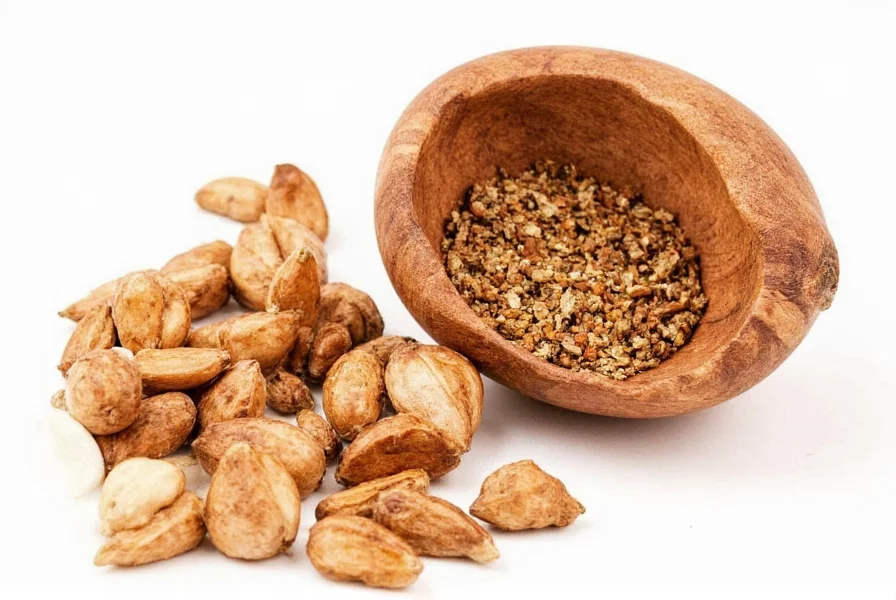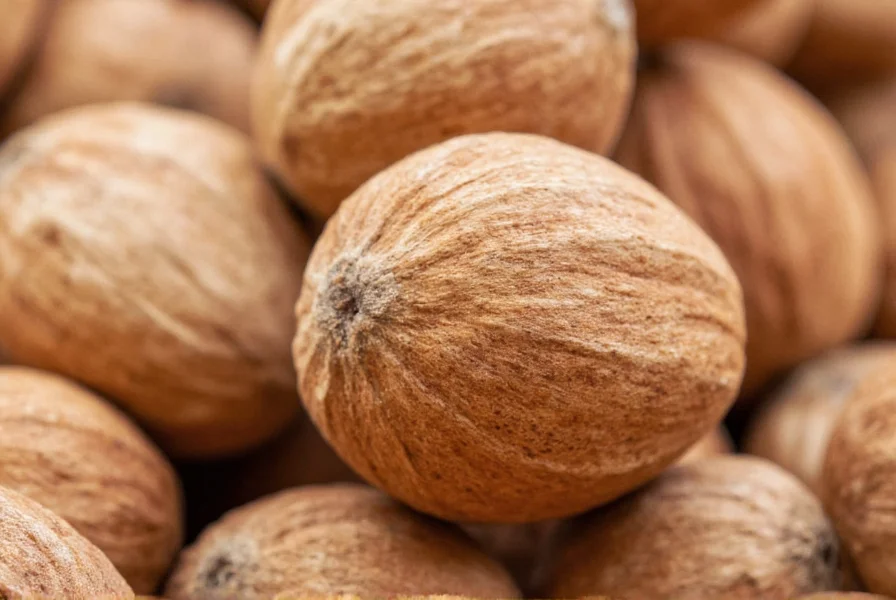Nutmeg's misleading name often creates confusion about its botanical classification and potential allergen risks. Understanding what nutmeg truly is matters significantly for culinary use, dietary planning, and allergy management. Let's explore the scientific facts behind this popular spice and clarify why it's fundamentally different from true nuts.
What Nutmeg Actually Is: A Botanical Explanation
Nutmeg comes from the Myristica fragrans tree, a tropical evergreen native to the Banda Islands in Indonesia. The spice we call nutmeg is the seed of the tree's fruit. When the fruit ripens, it splits open to reveal a crimson-colored aril surrounding the seed. The seed itself is nutmeg, while the aril is processed to become mace—one of nutmeg's lesser-known but equally valuable spice counterparts.

Why It's Called "Nutmeg" Despite Not Being a Nut
The name "nutmeg" likely originated from the Old French word nois musqué, meaning "musky nut," referring to its distinctive aroma rather than its botanical classification. Early European traders in the 16th and 17th centuries adopted this name, and it stuck despite the spice's actual nature as a seed.
This historical naming convention explains why many spices have misleading names. For example, is nutmeg a tree nut remains a common search query precisely because of this historical misnomer that persists in modern language.
Botanical Classification: Seeds vs. Nuts
From a botanical perspective, true nuts are hard-shelled fruits that contain both the seed and fruit of the plant, which do not split open to release the seed (like acorns or hazelnuts). Nutmeg, however, is a seed enclosed within a fruit. When the fruit matures, it splits open to reveal the seed—behavior characteristic of seeds, not true nuts.
| Characteristic | True Nuts | Nutmeg |
|---|---|---|
| Botanical Classification | Hard-shelled fruit containing seed | Seed of tropical fruit |
| Structure | Does not split open | Enclosed in fruit that splits when ripe |
| Allergen Profile | Contains tree nut proteins | No tree nut proteins |
| Common Examples | Almonds, walnuts, pecans | Derived from Myristica fragrans tree |
Nutmeg and Nut Allergies: Important Safety Information
One of the most pressing concerns driving searches for is nutmeg safe for nut allergies comes from legitimate allergy worries. The good news is that nutmeg does not contain the proteins that trigger tree nut allergies. The American College of Allergy, Asthma, and Immunology confirms that nutmeg is generally safe for people with tree nut allergies.
However, two important caveats exist:
- Cross-contamination risk: In facilities that process both nuts and spices, cross-contamination could occur.
- Individual sensitivities: Rare cases of nutmeg allergy exist, but these are unrelated to tree nut allergies.
If you have severe nut allergies, always check spice packaging for potential cross-contamination warnings. Understanding what is nutmeg classified as botanically helps separate legitimate allergy concerns from unnecessary fears.
Culinary Uses and Safety Considerations
Nutmeg's warm, slightly sweet flavor makes it valuable in both sweet and savory dishes—from pumpkin pie to béchamel sauce. While generally safe in culinary amounts, nutmeg contains myristicin, a compound that can cause unpleasant symptoms when consumed in very large quantities (typically more than 1-2 teaspoons).

This is why understanding nutmeg seed vs nut distinctions matters beyond just allergy concerns—it affects how we safely incorporate this spice into our diets. The European Food Safety Authority notes that typical culinary use presents no safety concerns, but recommends against consuming nutmeg in medicinal quantities without professional guidance.
Conclusion: Clarifying the Nutmeg Misconception
The question is nutmeg a nut stems from a historical naming error that continues to cause confusion today. Scientifically, nutmeg is unequivocally a seed, not a nut. This distinction has practical implications for people managing food allergies, following specific diets, or simply seeking accurate botanical knowledge.
When evaluating spices and potential allergens, always look beyond common names to understand the actual botanical classification. This approach helps make informed decisions about food safety and dietary choices without unnecessary restrictions.
Frequently Asked Questions
Is nutmeg safe for people with tree nut allergies?
Yes, nutmeg is generally safe for people with tree nut allergies because it is a seed, not a nut, and does not contain the proteins that trigger tree nut allergies. However, check for potential cross-contamination in processing facilities that handle both nuts and spices.
What is nutmeg actually classified as botanically?
Botanically, nutmeg is classified as a seed. It comes from the fruit of the Myristica fragrans tree. When the fruit ripens, it splits open to reveal the seed (nutmeg) surrounded by a red aril (which becomes mace when dried).
Can you be allergic to nutmeg if you have nut allergies?
Having a tree nut allergy doesn't automatically mean you'll react to nutmeg, as they're botanically unrelated. However, rare cases of nutmeg allergy do exist as a separate sensitivity. If concerned, consult an allergist before consuming nutmeg.
Why is it called nutmeg if it's not a nut?
The name comes from the Old French 'nois musqué' meaning 'musky nut,' referring to its distinctive aroma rather than its botanical classification. Early European traders adopted this name in the 16th-17th centuries, and it persisted despite being botanically inaccurate.











 浙公网安备
33010002000092号
浙公网安备
33010002000092号 浙B2-20120091-4
浙B2-20120091-4